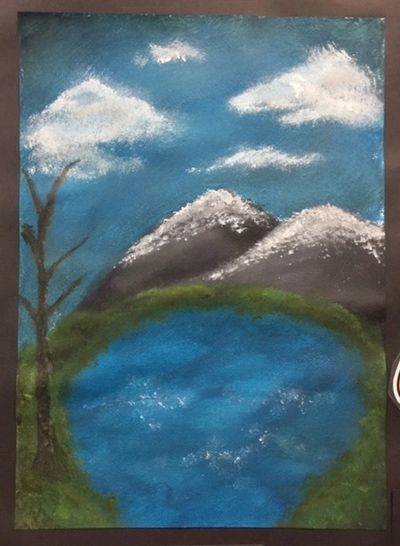Drawing - skills and development

An essential aspect of art education
It is important for students to be provided with opportunities each year to cultivate drawing abilities that align with their developmental stage. Additionally, they should be encouraged to study both traditional and contemporary artists who employ a variety of drawing techniques and methods.
Drawing units comprise the following components:
Art Theory:
Exploration and examination of artists from both traditional and contemporary periods, locally and globally, to understand the skills, techniques, and themes they explore.
Portfolio Development:
Engage in preliminary drawing exercises and receive guidance on the cognitive processes involved in drawing, including strategies to enhance realistic representation.
Still life drawing sessions.
Development of targeted techniques and skills tailored to each year level, ensuring they are age and developmentally appropriate.
Explore various drawing mediums and methods.
Final Artwork:
Plan and create a final piece of artwork in one of the mediums studied, utilizing selected techniques or skills to demonstrate acquired knowledge.
Self-Reflection and Peer Moderation:
Reflect on the development of skills, noting progress from year to year where applicable.
Student examples from drawing units
Painting - methods and mediums

A comprehensive study of painting methods and techniques
The teaching of painting methods and mediums are facilitated through structured workshops and personal exploration.
Art Theory:
Conduct a research assignment focusing on both a traditional and a contemporary artist who employ painting techniques in their creative processes. Present your findings to the class. (this is sometimes done in small groups depending on the needs of the class and the age of the students).
Portfolio Development:
Participate in skill-building workshops covering the following painting techniques:
Acrylic paint (colour mixing and the use of additives)
Watercolour paint (techniques for blending and layering, using both wet and dry paper)
Gouache (techniques for graphic or illustration work, transitioning into digital art production)
Oil paint (introductory techniques for oil painting)
Final Artwork:
Engage in independent exploration and skill development in selected painting techniques.
Self-Reflection and Peer Moderation:
Reflect on skill development, documenting progress over the years where applicable.
Student examples from painting units
Printmaking - traditional and contemporary methods

"Printmaking is drawing, just with different tools. - Henri Matisse
Students are encouraged to investigate various printmaking techniques.
As part of this educational journey, they conduct research on both traditional and contemporary artists who have incorporated printmaking methods into their artistic practices.
Additionally, they develop an understanding of the history of printmaking and trace its evolution over time.
Students participate in skill-building workshops that cover a range of printing methods and techniques, including:
- Collographic printing
- Stencils
- Lino printing
- Reduction lino printing
- Intaglio methods
- Solar ink prints
Furthermore, they engage in personal exploration of printing methods to create their own artworks.
Student examples from printmaking units
Clay - construction methods

“Clay can be dirt in the wrong hands, but clay can be art in the right hands” - Lupita Nyong’o
Students engage in the design and creation of ceramic artworks utilising earthenware clay and coloured glazes.
They participate in a series of workshops focused on various clay construction techniques, including:
Pinch pot construction
Coil construction
Slab construction
In addition to acquiring these essential techniques, students also:
Investigate a range of 3D artists from both traditional and contemporary periods.
Develop plans for their artwork, incorporating detailed sketches from front, side, and top perspectives.
Record their process through photography or videography for inclusion in their digital portfolio.
Analyze and reflect on the process of constructing an artwork using clay.
Student examples from clay units
Copyright © 2025 Lori Ruplal - All Rights Reserved.